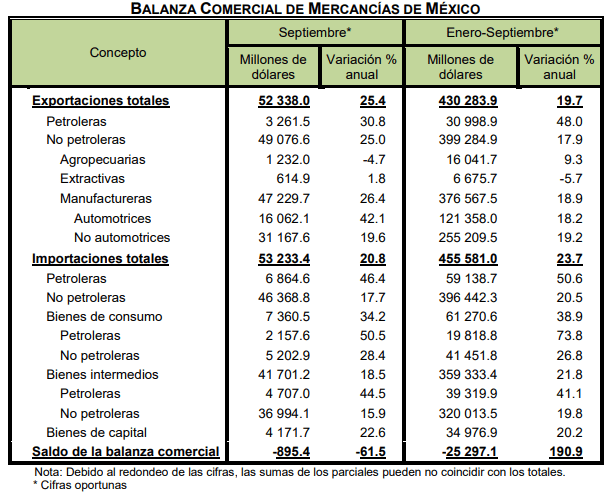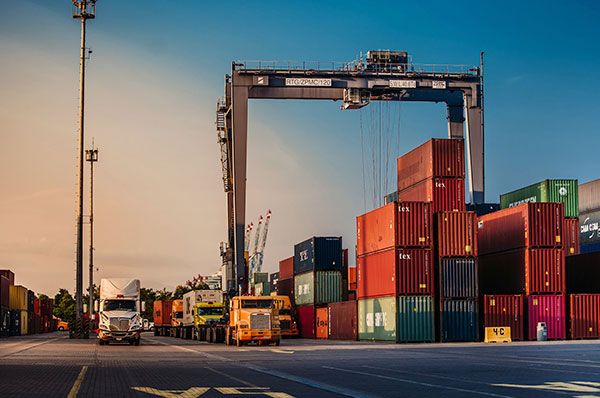Mexico‘s exports grew at an annual rate of 25.4% in September, to 52.338 billion dollars, considering only products, without services.
On the other hand, Mexican merchandise imports amounted to 53,233.4 million dollars, an increase of 20.8% at an annual rate.

Regarding its two main divisions, external oil sales amounted to 3,261.5 billion dollars (+30.8% year-on-year), while non-oil exports totaled 49,076.6 billion dollars (+25%).
Within the latter, agricultural sales amounted to 1,232 million dollars (-4.7%), extractive sales were 614.9 million (+1.8%) and manufacturing sales reached 47,229.7 million (+26.4%).
Within manufacturing, automotive exports amounted to 16,062.1 million dollars (+42.1%) and non-automotive exports were 31,167.6 million (+19.6%).
Mexico’s exports
Timely foreign trade information is prepared by the Tax Administration System (SAT), the Ministry of Economy (SE), the Bank of Mexico and the National Institute of Statistics and Geography (Inegi).
The United States Department of Commerce (USDOC) indicates that Mexico is the sixteenth largest economy in the world and has generally enjoyed slow but steady economic growth since the 1990s.
Despite global headwinds related to ongoing supply chain disruptions, inflation, and geopolitical instability, the USDOC projects Mexico’s economy to reach low but steady growth levels in 2022 and beyond, driven largely by external demand.
Mexico is a member of the World Trade Organization (WTO), Asia-Pacific Economic Cooperation (APEC), the G-20 and the Organization for Economic Cooperation and Development (OECD).
Mexico also has 13 free trade agreements (FTAs) covering 50 countries, including the 11-country Trans-Pacific Partnership Agreement (TIPAT, formerly known as the Trans-Pacific Partnership).
For U.S. exporters, Mexico’s participation in these international agreements means that the Mexican market is generally open and competitive.
Over the past 20 years, U.S. and Mexican supply chains have become increasingly integrated, and production sharing -with intermediate steps in the creation of a final good taking place on both sides of the border- is now commonplace.

